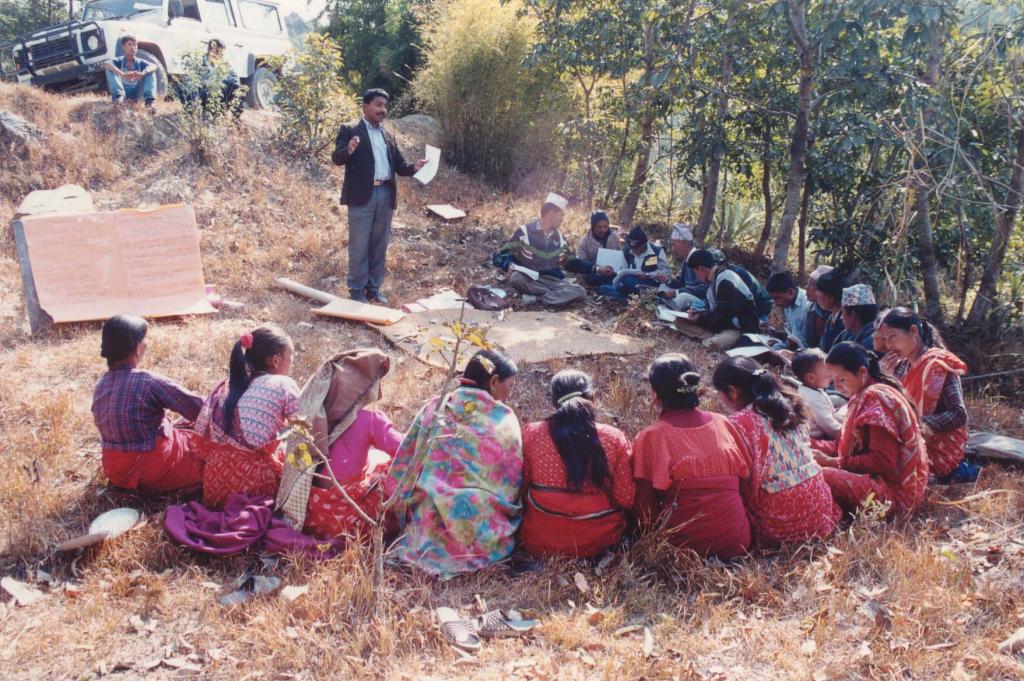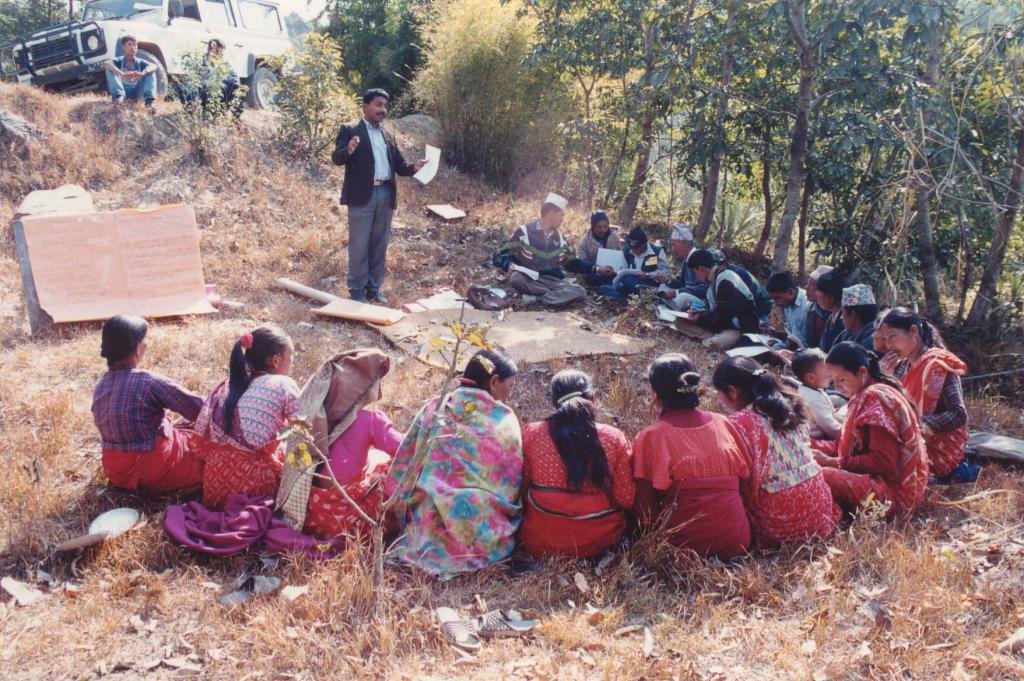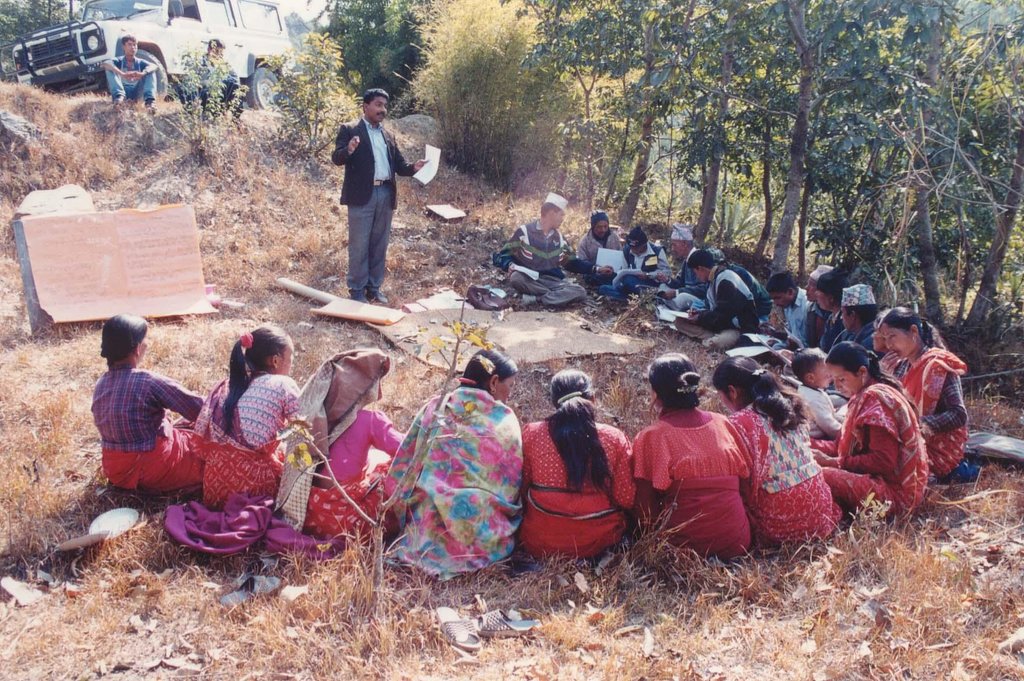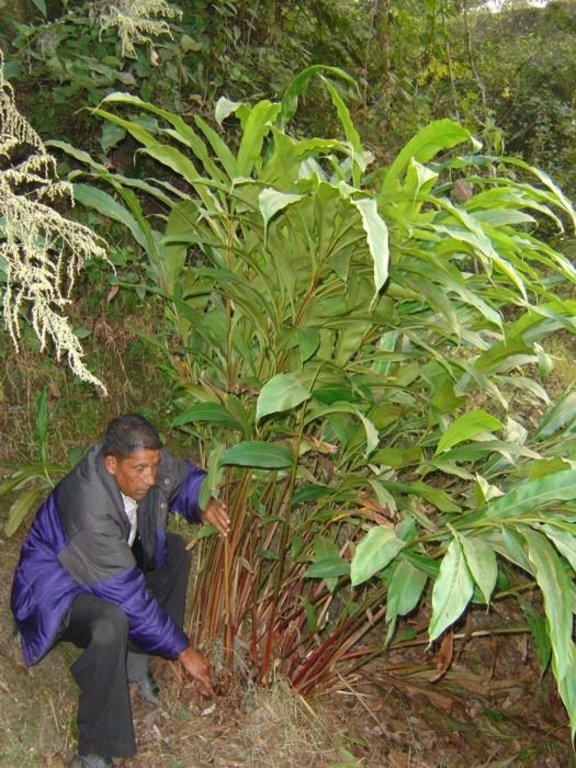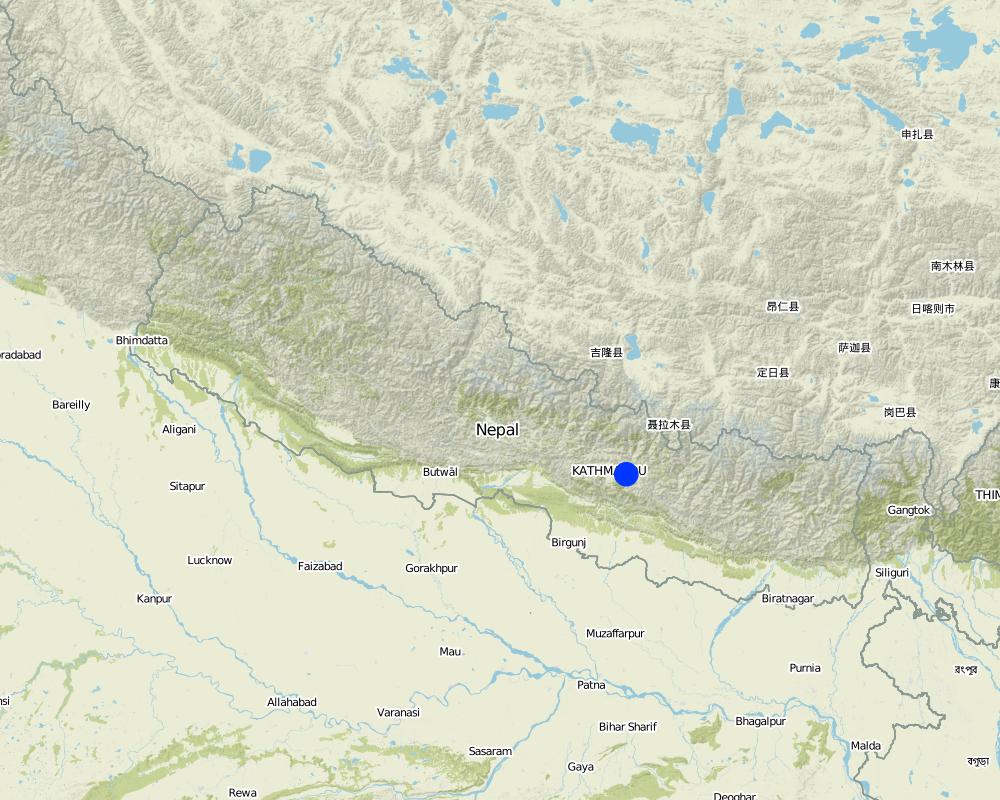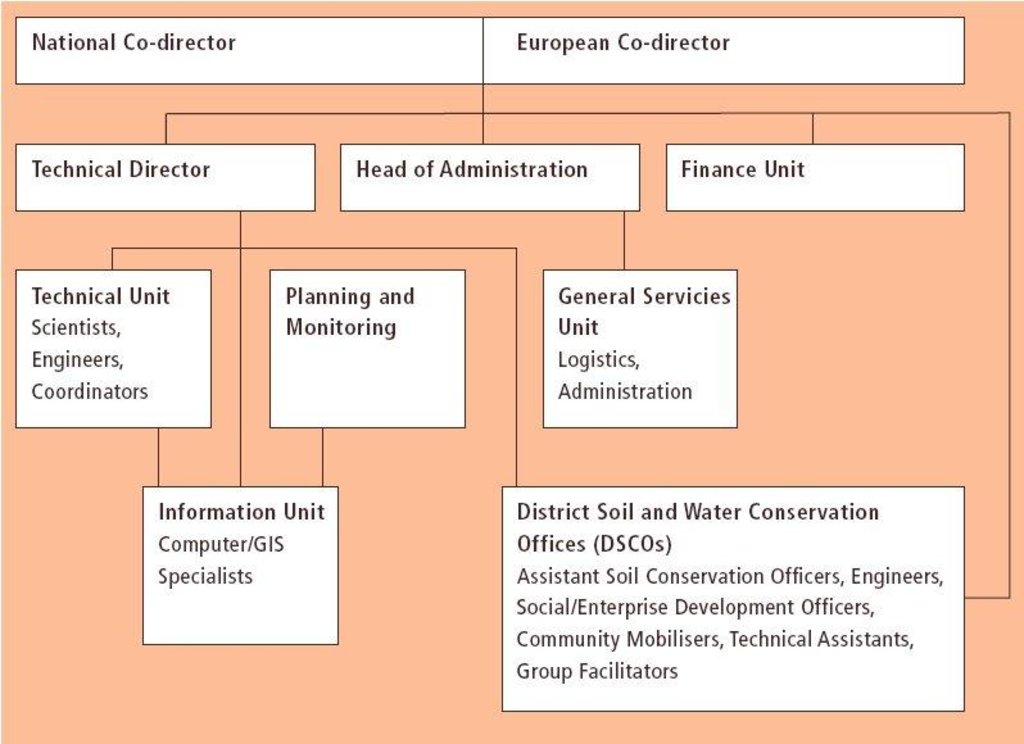Integrated watershed management for landslip and stream bank stabilisation [Nepal]
- Creation:
- Update:
- Compiler: Dileep Kumar Karna
- Editor: –
- Reviewers: Fabian Ottiger, Deborah Niggli
Pahiro ra nadikinar katan roktham ka lagi ekikrit jaladhar byabasthapan (Nepali)
approaches_2354 - Nepal
View sections
Expand all Collapse all1. General information
1.2 Contact details of resource persons and institutions involved in the assessment and documentation of the Approach
SLM specialist:
SLM specialist:
SLM specialist:
Name of project which facilitated the documentation/ evaluation of the Approach (if relevant)
Book project: where the land is greener - Case Studies and Analysis of Soil and Water Conservation Initiatives Worldwide (where the land is greener)Name of the institution(s) which facilitated the documentation/ evaluation of the Approach (if relevant)
G.B. Pant Institute of Himalayan Einvironment & Development (G.B. Pant Institute of Himalayan Einvironment & Development) - IndiaName of the institution(s) which facilitated the documentation/ evaluation of the Approach (if relevant)
ICIMOD International Centre for Integrated Mountain Development (ICIMOD) - NepalName of the institution(s) which facilitated the documentation/ evaluation of the Approach (if relevant)
CDE Centre for Development and Environment (CDE Centre for Development and Environment) - Switzerland1.3 Conditions regarding the use of data documented through WOCAT
The compiler and key resource person(s) accept the conditions regarding the use of data documented through WOCAT:
Yes
1.4 Reference(s) to Questionnaire(s) on SLM Technologies
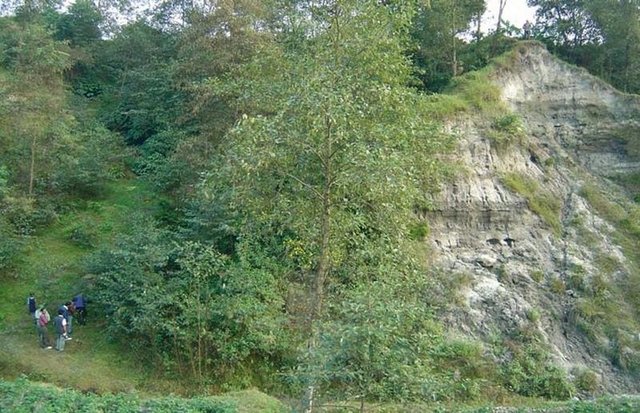
Landslip and stream bank stabilisation [Nepal]
Integration of vegetative and structural measures for landslip, stream bank and gully stabilisation on hillsides.
- Compiler: Dileep Kumar Karna
2. Description of the SLM Approach
2.1 Short description of the Approach
Integrated watershed management as an example for landslip and stream bank stabilisation based on fostering a partnership between community institutions, line agencies, district authorities and consultants
2.2 Detailed description of the Approach
Detailed description of the Approach:
Aims / objectives: The sustainable management of mountain watersheds is a huge challenge for watershed management programmes due to the lack of collaboration between the various institutions involved. Building of synergies between these institutions is crucial for improved management. The Bagmati Integrated Watershed Management Programme (BIWMP) started in 1986, initiated, coordinated, and organised by the Department of Soil Conservation and Watershed Management with support from the European Commission. The programme aimed to help overcome natural resource degradation and thereby raise the standard of living of the rural population. The main causes of degradation and options to address the related problems were identified through participatory action research. Landslip and stream bank stabilisation was identified as one of the most promising and needed options to conserve soil and water, whilst providing direct livelihood benefits to local people, for example planting of large cardamom, later used as a cash crop, and reestablishment of damaged agricultural terrace above the landslip. The approach was to foster partnership between and among communities, district authorities, line agencies, and consultants. Key priorities were to ensure the equitable involvement of women and socially disadvantaged people and to promote local ownership, institutional capacity building, and sustainability.
Methods: The programme used participatory extension methods such as farmer-to-farmer exchange, training workshops, and onsite demonstrations, with participatory approaches to planning, implementing, and monitoring. The activities were based on villager’s priorities and were implemented by individual households, farmer groups, and village institutions. The local village development committee, local NGOs, community forest user group, and individual households worked together on landslip and stream bank stabilisation. Involving a range of stakeholders was paramount for success.
Stages of implementation: The first phase began in 1986 and focused on developing technical packages which were implemented through user groups. The second phase focused on improvements to implementation procedures, especially community organisation, extension, and income generation activities. The capacity of community groups was developed by establishing communication facilities, building up community networks, and empowering women and disadvantaged groups. BIWMP ended in 2003 with much of its success attributed to the close involvement of all the main stakeholders, and especially the local people, in all the activities. It successfully helped land users to adopt improved livelihood options.
2.3 Photos of the Approach
2.5 Country/ region/ locations where the Approach has been applied
Country:
Nepal
Region/ State/ Province:
Bagmati Watershed
Map
×2.6 Dates of initiation and termination of the Approach
Indicate year of initiation:
1992
Year of termination (if Approach is no longer applied):
2003
2.7 Type of Approach
- project/ programme based
2.8 Main aims/ objectives of the Approach
The Approach focused mainly on SLM with other activities (poverty reduction through sustained income generation, infrastructure improvement through equitable involvement of women and the socially disadvantaged.)
To overcome the constraints to effectively implementing a watershed management programme by building synergies between diverse stakeholder institutions. In the case of landslip and stream bank stabilisation work, the specific objective was to come up with a technology that conserved soil and water whilst also providing direct livelihood benefits to local people.
The SLM Approach addressed the following problems: Lack of institutional capacity and collaboration for managing watershed resources
2.9 Conditions enabling or hindering implementation of the Technology/ Technologies applied under the Approach
social/ cultural/ religious norms and values
- hindering
Following conventional top-down approaches.
Treatment through the SLM Approach: Introduction of improved methods with more participation/ involvement of land users.
institutional setting
- hindering
Lack of inter-institutional collaboration.
Treatment through the SLM Approach: Building and ensuring collaboration.
legal framework (land tenure, land and water use rights)
- enabling
The existing land ownership, land use rights / water rights greatly helped the approach implementation: The fact that the land was communal land (state property, use right with community) greatly helped smooth implementation of the approach as it was not necessary to deal with different land users.
knowledge about SLM, access to technical support
- hindering
Lack of new options.
Treatment through the SLM Approach: Training about new technologies.
3. Participation and roles of stakeholders involved
3.1 Stakeholders involved in the Approach and their roles
- local land users/ local communities
Men and women worked equally. existing groups of land users; men and women worked equally. BIWMP took a bottom-up approach to planning and implementation and encouraged the equitable involvement of women in its activities. The decisions about implementing the landslip and stream bank stabilisation technology were taken jointly by men and women
- SLM specialists/ agricultural advisers
- teachers/ school children/ students
- national government (planners, decision-makers)
- international organization
If several stakeholders were involved, indicate lead agency:
For the landslip and stream bank stabilisation technology, the approach was mainly designed by programme staff of the Kathmandu District Soil Conservation Office.
3.2 Involvement of local land users/ local communities in the different phases of the Approach
| Involvement of local land users/ local communities | Specify who was involved and describe activities | |
|---|---|---|
| initiation/ motivation | interactive | rapid/participatory rural appraisal |
| planning | interactive | rapid/participatory rural appraisal; Share information from users right from planning period. |
| implementation | interactive | responsible for major steps; Users were agreed to conserve soil by using SLM approaches. |
| monitoring/ evaluation | interactive | Mainly: reporting, public meetings, measurements/observations; partly: workshop/seminars; Regular monitoring and evaluation were successfully conducted by DSCO Office for the backstopping of the activities. |
| Research | interactive | on-farm; This site is used as a Farmers School for extension of the technology on National and International level. |
3.3 Flow chart (if available)
Description:
Organogram of the Bagmati Integrated Watershed Management Programme (BIWMP). The landslip and stream bank stabilisation work was implemented by the Kathmandu District Soil Conservation Office supervi
3.4 Decision-making on the selection of SLM Technology/ Technologies
Specify who decided on the selection of the Technology/ Technologies to be implemented:
- mainly SLM specialists, following consultation with land users
Explain:
The land users did not know about the technologies
Decisions on the method of implementing the SLM Technology were made by mainly by SLM specialists with consultation of land users. As measures required technical know-how
4. Technical support, capacity building, and knowledge management
4.1 Capacity building/ training
Was training provided to land users/ other stakeholders?
Yes
Specify who was trained:
- land users
Form of training:
- farmer-to-farmer
- demonstration areas
- public meetings
Subjects covered:
On soil and water conservation
4.2 Advisory service
Do land users have access to an advisory service?
Yes
Specify whether advisory service is provided:
- on land users' fields
Describe/ comments:
Name of method used for advisory service: Integrated Watershed Management Programme; Key elements: Participatory Rural Appraisal, Trainings, Farmer to farmer exchange, workshops, seminars, On site Demnostration; 1) Advisory service was carried out through: government's existing extension system; Extension staff: mainly government employees 2) Target groups for extension: land users; Activities: Planning,Training, Awareness about SLM approaches
Advisory service is quite adequate to ensure the continuation of land conservation activities; An extension workers is able to cover the areas where activities are implemented in small scale (i.e. subwatreshed or Micro subwatershed level programme).
4.3 Institution strengthening (organizational development)
Have institutions been established or strengthened through the Approach?
- yes, greatly
Specify the level(s) at which institutions have been strengthened or established:
- local
Specify type of support:
- capacity building/ training
- equipment
4.4 Monitoring and evaluation
Is monitoring and evaluation part of the Approach?
Yes
Comments:
bio-physical aspects were ad hoc monitored through measurements
technical aspects were regular monitored through observations
socio-cultural aspects were regular monitored through observations
economic / production aspects were regular monitored through observations
area treated aspects were ad hoc monitored through measurements
no. of land users involved aspects were regular monitored through observations
management of Approach aspects were regular monitored through observations
There were many changes in the Approach as a result of monitoring and evaluation: The approach described was designed on the basis of the results shown through monitoring and evaluating the first phase of BIWMP (1986-1992). In the second phase from 1992, more attention was focused on building up the capacity of community groups to plan, implement, and continue development activities. Capacity was built through (1) community-level training; (2) supporting the installation of com
4.5 Research
Was research part of the Approach?
Yes
Specify topics:
- sociology
- economics / marketing
- ecology
- technology
Give further details and indicate who did the research:
see also further reading
5. Financing and external material support
5.1 Annual budget for the SLM component of the Approach
If precise annual budget is not known, indicate range:
- > 1,000,000
Comments (e.g. main sources of funding/ major donors):
Approach costs were met by the following donors: international (European Commission): 81.0%; government (national - His Majesty's Government (Nepal)): 4.0%; local community / land user(s) (Bagmati watershed): 15.0%
5.2 Financial/ material support provided to land users
Did land users receive financial/ material support for implementing the Technology/ Technologies?
Yes
5.3 Subsidies for specific inputs (including labour)
- agricultural
| Specify which inputs were subsidised | To which extent | Specify subsidies |
|---|---|---|
| seeds | ||
| Seedlings and samples | partly financed | |
- construction
| Specify which inputs were subsidised | To which extent | Specify subsidies |
|---|---|---|
| community infrastructure (cement, bricks, stones) | fully financed | |
If labour by land users was a substantial input, was it:
- voluntary
Comments:
About 75% of the labour for the landslip and stream bank stabilisation work was voluntar. The remainder was paid
5.4 Credit
Was credit provided under the Approach for SLM activities?
No
6. Impact analysis and concluding statements
6.1 Impacts of the Approach
Did the Approach help land users to implement and maintain SLM Technologies?
- No
- Yes, little
- Yes, moderately
- Yes, greatly
The approach helped to improve soil and water management by promoting many activities related to agroforestry, water harvesting, landslip stabilisation, and community forestry. Many local land users adopted these technologies.
Did the Approach improve issues of land tenure/ user rights that hindered implementation of SLM Technologies?
- No
- Yes, little
- Yes, moderately
- Yes, greatly
By influencing the forest department ot allocate forest to the people as community forest.
Did other land users / projects adopt the Approach?
- No
- Yes, little
- Yes, moderately
- Yes, greatly
It is not known whether this approach has been taken to address landslip and stream bank erosion problems in other areas by other projects.
6.3 Sustainability of Approach activities
Can the land users sustain what has been implemented through the Approach (without external support)?
- uncertain
If no or uncertain, specify and comment:
The land users were keen on maintaining the implemented technologies due to the benefits they could get from it. There has to be a strong driving force within the land users and the community to continue this approach.
6.4 Strengths/ advantages of the Approach
| Strengths/ advantages/ opportunities in the land user’s view |
|---|
| Helped land users improve their livelihoods. (How to sustain/ enhance this strength: Similar approaches should be implemented by government and community programmes.) |
| Strengths/ advantages/ opportunities in the compiler’s or other key resource person’s view |
|---|
| Involves all key actors in watershed management. (How to sustain/ enhance this strength: Institutionalise the approach.) |
| The approach encourages land users communities and local institutions to get involved in planning and decision making (How to sustain/ enhance this strength: Involve them more in planning and decision making) |
| The implementation of technologies through this approach is cost-effective and socio-culturally acceptable. (How to sustain/ enhance this strength: Take into account local resources and knowledge) |
6.5 Weaknesses/ disadvantages of the Approach and ways of overcoming them
| Weaknesses/ disadvantages/ risks in the land user’s view | How can they be overcome? |
|---|---|
| No opinion. |
| Weaknesses/ disadvantages/ risks in the compiler’s or other key resource person’s view | How can they be overcome? |
|---|---|
| Some activities with high input requirements may not be spontaneously adopted by poor land users | Further research on how to reduce inputs or provide specifi c incentives for such disadvantaged groups. |
| The approach is 'project focussed' | Institutionalise the approach |
| The approach does not focus on landless families. | Implement watershed management activities that involve and benefit landless people |
7. References and links
7.1 Methods/ sources of information
- field visits, field surveys
- interviews with land users
7.2 References to available publications
Title, author, year, ISBN:
Mallik, D.B. (2000) 'Working with Community'. In Jaladhar-QuarterlyBIWM (1998 to 2001) Annual Workplans for Project Years 1998 to 2002, prepared for Government of Nepal,MOFS,DSCWM and EU; Kathmandu, Nepal
Available from where? Costs?
BIWMPBIWMP email: biwmp@mos.com.np
Title, author, year, ISBN:
BIWM (1998 to 2001) Annual Workplans for Project Years 1998 to 2002, prepared for Government of Nepal,MOFS,DSCWM and EU; Kathmandu, Nepal
Available from where? Costs?
BIWMP email: biwmp@mos.com.np
Links and modules
Expand all Collapse allLinks

Landslip and stream bank stabilisation [Nepal]
Integration of vegetative and structural measures for landslip, stream bank and gully stabilisation on hillsides.
- Compiler: Dileep Kumar Karna
Modules
No modules


